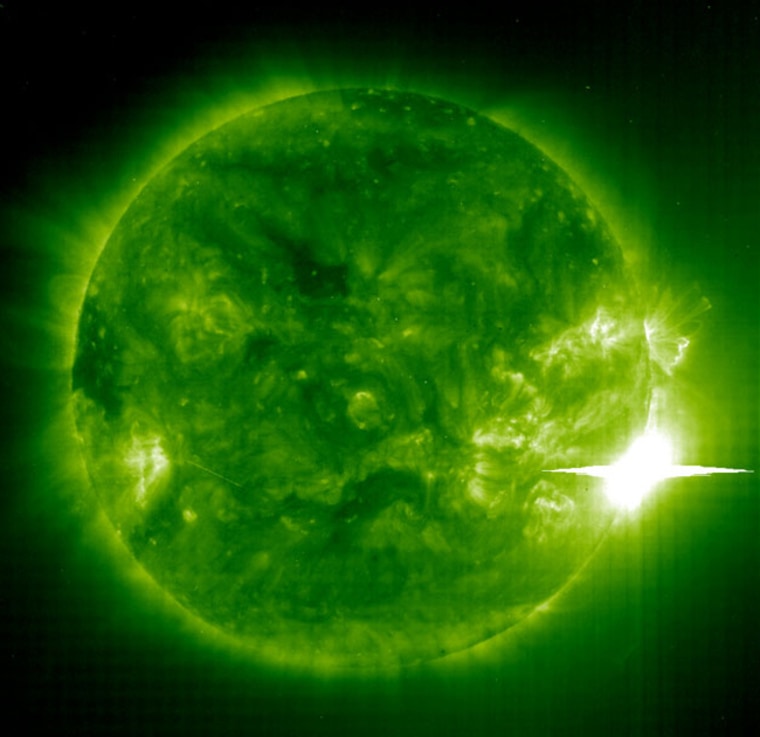Potentially disruptive solar storms can't reach Earth in less than half a day, scientists have determined.
That means operators of vulnerable satellites, airline officials and power grid managers can expect several hours of warning for any electrical disturbance shot from the Sun.
Warnings are provided by NASA's sun-watching SOHO spacecraft and other observations. When space storms approach, engineers put some satellites into sleep mode, airlines are rerouted away from polar regions where more radiation leaks through the atmosphere, and major electrical lines are safeguarded against overloads.
The worst sun storms are called coronal mass ejections (CMEs). They're made of charged particles flung from intense magnetic fields on the solar surface. CMEs are sometimes but not always generated at the sites of solar flares, which are in turn associated with sunspots.
Initial radiation from a solar flare, including X-rays, travels to Earth at the speed of light. But the charged particles of a CME, which expand into space like a growing cloud, present greater hazards to the electrical systems aboard Earth-orbiting satellites. Radio transmissions on Earth can be disrupted and entire power grids can be tripped, though such events have proved rare.
Damage potential
There are many factors behind the damage potential of any CME, including whether it is directed squarely at Earth, how strong it is, and whether its magnetic field is oriented the same or opposite to that of Earth. How fast it moves also contributes to its strength upon arrival.
"The faster the CME, the more potentially destructive it can be, so for a worst-case scenario, we now know we have at least 12 hours to take preventative measures," according to Nat Gopalswamy of NASA's Goddard Space Flight Center.
Some CMEs take two days to traverse the roughly 93 million miles between sun and Earth. The most powerful solar flare in modern times occurred last Nov. 4. It was not directed at Earth, so its associated CME took about 24 hours to arrive and the effects were limited. But it was the fastest CME on record, moving at 6 million mph (2,700 kilometers per second). It would have hit within 15 hours had it been aimed at the planet.
Two back-to-back strong flares a few days before, in late October, kicked up CME blasts that each arrived in about 19 hours. Scientists were surprised at the speed of travel. But no one knew if there were any limits.
Gopalswamy's team examined records going back to 1859, presenting their results earlier this month at a meeting of the American Astronomical Society.
Top speed related to energy
The researchers conclude a CME's top speed is related to a limit on the amount of energy available to propel it off the sun.
The propulsion mechanism involves twisted magnetic fields that snap, flinging energy into space. Their strength is in turn controlled by the size of "active region" that generate flares and CMEs. These active regions contain sunspots, which are cooler, darker, and act as caps on the magnetic energy. When the cap is released, the storms spew into space somewhat like soda released from a shaken bottle.
The active region that generated the November 2003 storm was 17 times larger than the entire surface of Earth. It was the biggest seen in the current solar cycle. The 11-year cycle is now ramping down toward a minimum of activity, expected in 2007 or 2008.
